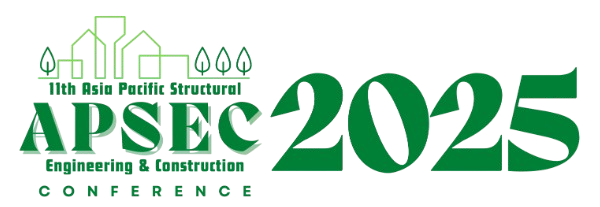TITLE OF THE PAPER
First A. Author*1, Second B. Author2 and Third C. Author3
1, 2 Department, Institute, City, COUNTRY
firstauthorsname@aaaa.bbb, secondauthorsname@aaaa.bbb
3 Department, Institute, City, COUNTRY
ABSTRACT
The abstract should not be more than 200 words. The abstract should not only indicate the subject and scope of the paper but also summarize the author’s conclusion. The abstract should succinctly summarize the purpose of the paper, the methods used, the major results, and the conclusions.
Keywords: Keyword 1; Keyword 2; Keyword 3 (Minimum 3 keywords and maximum 5 Keywords)
INTRODUCTION
Authors should follow the format presented here for submission of extended abstracts to APSEC. The extended abstract should be at maximum only 3 pages and submitted in Word document format. The citation format is APA 7th edition
The use of an incorrect format may result in your extended abstract being rejected. After submission, our editors and technical committee will check the extended abstract for plagiarism and suitability for acceptance.
MAIN RESULTS
Further information regarding the extended abstract format is listed here. The extended abstract should be written in single-spaced, 12-point, Times New Roman font type. Do not indent the text paragraphs. Please briefly explain the aim and scope of the study, the materials and methods, and the main findings and brief analysis of the study. Figures can be included here and referred to in the text. A table also can be inserted like the one below and referred to in the text.
Figure 1. Example of figure for the extended abstract
Table 1. Example of table for the extended abstract
|
Text |
A = 0.56 |
B = 0.69 |
C = 0.75 |
D = 0.100 |
|
AB1 |
14.0640 |
18.5620 |
22.0817 |
18.90732 |
|
AC2 |
61.6728 |
44.7844 |
44.5884 |
60.17496 |
|
AD3 |
88.1380 |
118.1564 |
101.2240 |
120.72693 |
CONCLUSION
The conclusion section should be succinctly written.
ACKNOWLEDGEMENT
If authors wish to acknowledge funding bodies and other parties, the acknowledgements may be placed in a separate section at the end of the text, before references, as shown here.
REFERENCES
Abdulkareem, M., Bakhary, N., Vafaei, M., Noor, N. M., & Mohamed, R. N. (2019). Application of two-dimensional wavelet transform to detect damage in steel plate structures. Measurement, 146, 912-923.
Norhazilan, M. N., Nordin, Y., Lim, K. S., Siti, R. O., Safuan, A. R. A., & Norhamimi, M. H. (2012). Relationship between soil properties and corrosion of carbon steel. Journal of Applied Sciences Research, 8(3), 1739-1747.
